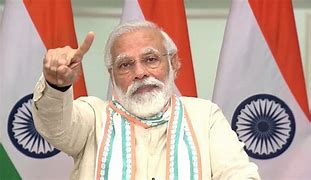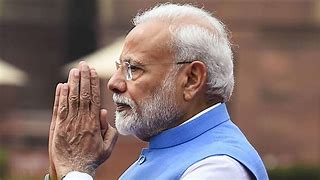Feature
When Modi quaffed a drink to India-Fiji friendship

New Delhi: When Prime Minister Narendra Modi was presented a coconut shell cup with a “intoxicating” Fijian drink after an elaborate traditional welcome ritual performed by men wearing grass skirts in Suva last month, he did not hesitate but quaffed the contents in one straight gulp – as per local tradition.
Modi was presented the yaqona or kava, a traditional non-alcoholic drink prepared from the pulverised root of a plant from the pepper family (Piper methysticum, Piper: Latin for “pepper”, methysticum: Latinized Greek for “intoxicating”). The muddy-coloured liquid is said to have a tingly numbing effect on the tongue.
The yaqona ceremony has great significance in Fiji where old customs still prevail. Turning down an offer to drink a bowl of yaqona – that is said to have “narcotic effect” – is considered insulting in Fijian society.
As the men from the Fijian village of Sorokoba, of Ba province, bare-chested and dressed in long grass skirts performed the traditional yaqona welcome ceremony, singing all the while, on Nov 19 at the Albert Park, Modi sat through the elaborate ancient ritual.
He had landed a couple of hours earlier from a long flight from Australia, where he had spent five hectic days of diplomatic engagement, and was on the last leg of his three-nation tour, with the first stop having been to Myanmar. Modi was the first Indian prime minister to visit the Pacific Ocean island nation in 33 years after former prime minister Indira Gandhi in 1981.
To first timers the yoqona drink can be unpleasant tasting. According to reports in The Telegraph, it tastes like “puddle water” or as one visitor described it a “cocktail of dirty washing water garnished with old socks”.
Advised beforehand, Modi accepted the drink proffered by the master of ceremonies, and without any change of expression gulped it down in one draught. The prime minister’s quaffing of the drink was accompanied by much hand clapping.
After the ceremony Fijian Prime Minister Voreqe Bainimarama gave a welcome speech, followed by a speech by Modi.
Chinese President Xi Jinping, who visited Fiji two days after Modi, was welcomed with a similar ceremony by the people of Nakorotubu villagein Ra province.
Yaqona is drunk by ethnic Fijians – known as iTaukei – and indo-Fijians, who make up around 37 percent of Fiji’s 827,900 people, as well as the other ethnicities that make up its populace.
According to a Fiji official site, the drinking of yaqona (pronounced Yangona) or kava, is a common ceremonial and social custom. The yaqona ceremony has great significance in Fijian life but is now considered a social drink as well as a ceremony.
Yaqona drinking is common in Fijian villages and it is quite normal to see groups of men gathered around the tanoa, or large wooden bowl, swapping stories as the bilo, a half coconut shell, is passed around with the drink.
There is a humorous story about the Prince of Wales who took part in a grand burau or (kava-drinking ceremony) at the village of Viseisei, near Nadi, in March 2005.
Prince Charles had just landed after a three-hour flight from New Zealand and was still dressed in his dark, double-breasted Saville Row suit. After the 90-minute ritual, the British royal was presented a “dish of kava, the mind-adjusting South Pacific drink”.
“It is said to numb the lips and fuddle the brainwaves: in short, it boasts narcotic effects”.
As Prince Charles was presented the “intoxicant”, he “cautiously raised it to his lips and grimaced. It cannot be said with certainty whether he took a sip or a gulp; whether he was a polite social drinker or a kava lout,” said a report in the Independent.
“He seemed suitably sedated after his 90-minute session, and in his thank-you speech got all his dates mixed up. The generous Fijians put it down to jet-lag rather than kava abuse,” said the Telegraph.
Entertainment
Meghalaya Reserves Legalized Gambling and Sports Betting for Tourists

The State Scores Extra High on Gaming-Friendly Industry Index
Meghalaya scored 92.85 out of 100 possible points in a Gaming Industry Index and proved to be India’s most gaming-friendly state following its recent profound legislation changes over the field allowing land-based and online gaming, including games of chance, under a licensing regime.
The index by the UK India Business Council (UKIBC) uses a scale of 0 to 100 to measure the level of legalisation on gambling and betting achieved by a state based on the scores over a set of seven different games – lottery, horse racing, betting on sports, poker, rummy, casino and fantasy sports
Starting from February last year, Meghalaya became the third state in India’s northeast to legalise gambling and betting after Sikkim and Nagaland. After consultations with the UKIBC, the state proceeded with the adoption of the Meghalaya Regulation of Gaming Act, 2021 and the nullification of the Meghalaya Prevention of Gambling Act, 1970. Subsequently in December, the Meghalaya Regulation of Gaming Rules, 2021 were notified and came into force.
All for the Tourists
The move to legalise and license various forms of offline and online betting and gambling in Meghalaya is aimed at boosting tourism and creating jobs, and altogether raising taxation revenues for the northeastern state. At the same time, the opportunities to bet and gamble legally will be reserved only for tourists and visitors.
“We came out with a Gaming Act and subsequently framed the Regulation of Gaming Rules, 2021. The government will accordingly issue licenses to operate games of skill and chance, both online and offline,” said James P. K. Sangma, Meghalaya State Law and Taxation Minister speaking in the capital city of Shillong. “But the legalized gambling and gaming will only be for tourists and not residents of Meghalaya,” he continued.
To be allowed to play, tourists and people visiting the state for work or business purposes will have to prove their non-resident status by presenting appropriate documents, in a process similar to a bank KYC (Know Your Customer) procedure.
Meghalaya Reaches Out to a Vast Market
With 140 millions of people in India estimated to bet regularly on sports, and a total of 370 million desi bettors around prominent sporting events, as per data from one of the latest reports by Esse N Videri, Meghalaya is set to reach out and take a piece of a vast market.
Estimates on the financial value of India’s sports betting market, combined across all types of offline channels and online sports and cricket predictions and betting platforms, speak about amounts between $130 and $150 billion (roughly between ₹9.7 and ₹11.5 lakh crore).
Andhra Pradesh, Telangana and Delhi are shown to deliver the highest number of bettors and Meghalaya can count on substantial tourists flow from their betting circles. The sports betting communities of Karnataka, Maharashtra, Uttar Pradesh and Haryana are also not to be underestimated.
Among the sports, cricket is most popular, registering 68 percent of the total bet count analyzed by Esse N Videri. Football takes second position with 11 percent of the bets, followed by betting on FIFA at 7 percent and on eCricket at 5 percent. The last position in the Top 5 of popular sports for betting in India is taken by tennis with 3 percent of the bet count.
Local Citizens will Still have Their Teer Betting
Meghalaya residents will still be permitted to participate in teer betting over arrow-shooting results. Teer is a traditional method of gambling, somewhat similar to a lottery draw, and held under the rules of the Meghalaya Regulation of the Game of Arrow Shooting and the Sale of Teer Tickets Act, 2018.
Teer includes bettors wagering on the number of arrows that reach the target which is placed about 50 meters away from a team of 20 archers positioned in a semicircle.
The archers shoot volleys of arrows at the target for ten minutes, and players place their bets choosing a number between 0 and 99 trying to guess the last two digits of the number of arrows that successfully pierce the target.
If, for example, the number of hits is 256, anyone who has bet on 56 wins an amount eight times bigger than their wager.























